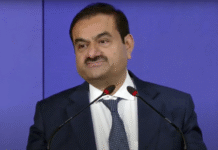Mumbai– India’s manufacturing activity lost some momentum in September due to softer increase in new business inflows, a key macro-economic data showed on Monday.
However, the data report pointed out that manufacturing business conditions improved for the ninth straight month, albeit rather slowly.
The Nikkei Markit India Manufacturing Purchasing Managers’ Index (PMI) — a composite indicator of manufacturing performance — declined to 52.1 last month from 52.6 in August.
An index reading of above 50 indicates an overall increase in economic activity, and below 50 an overall decrease.
“The Indian manufacturing industry lost momentum in September, as growth of new orders eased from August’s 20-month high,” Pollyanna De Lima, Economist at IHS Markit and author of the report was quoted in a statement as saying.
“However, output is still rising at a decent clip and the sector looks likely to have delivered a stronger contribution to GDP growth in Q2 FY2016/17, with the quarterly reading for the PMI’s Output Index up from 51.4 during April-June to 53.6.”
According to the report, India’s manufacturing upturn was sustained in September, as a further increase in order books underpinned growth of output and purchasing activity.
The PMI report said that the sector derived strength from external demand, with firms noting the strongest rise in new export orders since July 2015.
Nevertheless, the manufacturing activity’s expansion eased. The latest figures showed an intensification of inflationary pressures with both input costs and output charges recorded increase.
“Amid reports of orders being fulfilled directly from stocks, post-production inventories fell again in September. Conversely, holdings of raw materials and semi-manufactured goods rose for the tenth successive month,” the statement said.
The PMI data revealed that average purchase costs increased at a faster pace in September, but one that was weak compared to its long-run trend. The main item reported to be up in price was steel.
The data implied that manufacturers attempted to protect profit margins as output
charges were raised further. Despite ticking higher, the rate of inflation was historically muted.
“Although inflation rates edged higher, these remain weak by historical standards and indicate that we may still see the RBI loosening monetary policy in 2016,” Pollyanna De Lima said.
The Nikkei India Manufacturing PMI is based on data compiled from monthly replies to questionnaires sent to purchasing executives in over 400 industrial companies.






